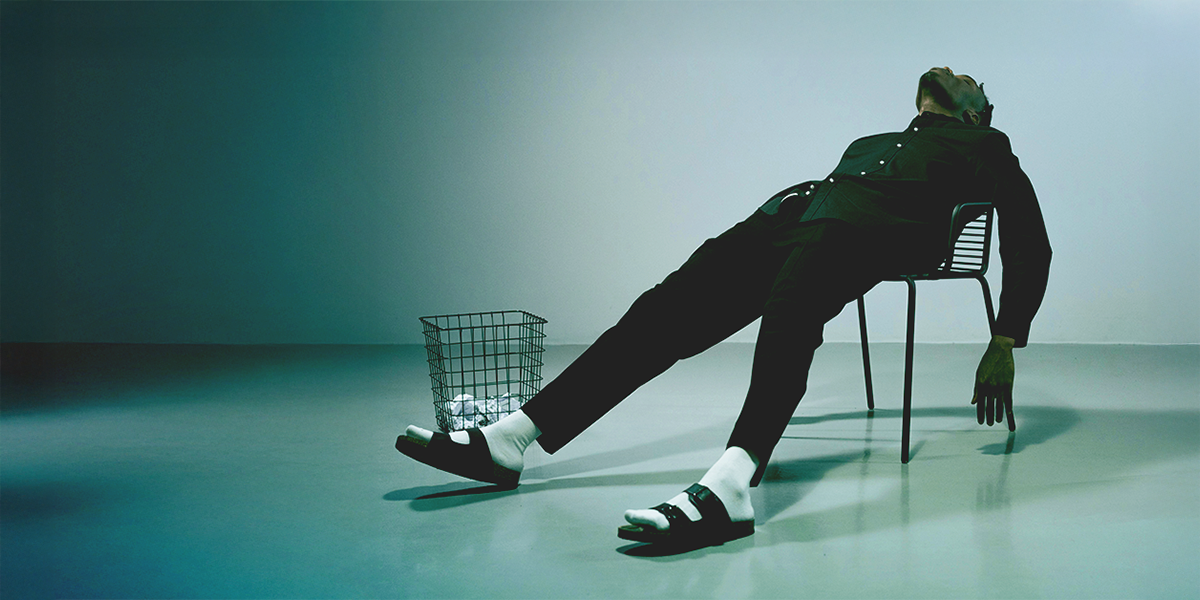
When I was first thinking about becoming a freelancer in 2019, I was terrified of taking the risk.
I spent many long nights lying awake, wondering whether I’d find clients and make enough money to survive. I imagined myself having to crawl back to my former employer or sign up for a different job that I hated, because I’d fail.
Then I had a friend who had already made the leap into freelancing say something that I’ll never forget. He admitted that becoming a freelancer was taking a big risk. “Like stepping into a dark staircase,” he said. “At first, you don’t know how far down you’ll fall. But then once you step in, you find out it was worth it to take that first step.”
He turned out to be right—becoming a freelancer was the best thing I’ve done for my career, and I’m thankful I decided to take the risk. If I hadn’t, I’d probably still be miserable, stuck behind a desk in some office somewhere.
Risks are an unavoidable part of life, but ideally, most of them turn out to be like that dark stairwell—a lot less scary than they appear from the top, and ultimately a good decision.
But it’s not easy to know which risks to take, especially when you’re in your late teens or early 20s. During that time of life, big decisions are coming at you left and right, but you have little personal life experience to go off of.
In this article, I’ll help you understand what happens when you’re faced with a risk, and give you some practical tips to help you decide which risks are worth taking.
Why your brain fights against risk (and why it’s worse for Gen Z)
Your brain’s primary job is to keep you alive, which means it’s wired to keep you from taking risks. When you’re faced with uncertainty, your amygdala (the brain’s alarm system) kicks into high gear, flooding your body with stress hormones and screaming “DANGER!” even when the actual threat is pretty minimal.
Some people are naturally more comfortable with uncertainty than others. Genetics, upbringing, and life experiences all play a role in shaping your risk tolerance. But Gen Z faces some unique challenges that make risk-taking even harder.
Growing up during economic instability, witnessing multiple financial crashes, and entering adulthood during a global pandemic has created a generation that’s understandably cautious.
When everything is so expensive and basic living costs feel out of reach, taking financial risks—like starting a business or leaving a stable job—can feel impossible.
Add in social media, where every failure can feel public and permanent, and you’ve got a perfect storm for risk aversion. When you’re living in a comparison culture where every move you make could be posted online and become part of your permanent legacy, risk becomes especially scary.
Many of the traditional “coming of age” milestones—moving out of your parents’ house, starting a serious relationship, committing to a career path—are happening later or getting skipped altogether. When the world feels unstable, playing it safe seems like the smart move.
But here’s what your brain doesn’t tell you: avoiding risk comes with its own set of consequences.
Related: Trying Something New: Why It’s So Scary and Why It’s So Worth It
The hidden cost of playing it safe
When you avoid taking risks, you’re actively choosing to limit yourself and your opportunities for growth. The biggest cost of playing it safe isn’t what might go wrong if you take a chance. The biggest cost is what definitely won’t happen if you don’t.
Career-wise, staying in your comfort zone might feel secure, but it’s also a guaranteed way to watch opportunities pass you by. While you’re playing it safe in a job that’s “fine,” someone else is taking the risk to ask for a promotion, switch industries, or start their own business. They’re the ones who end up with the stories worth telling and the bank accounts to match.
Relationships work the same way. Every meaningful connection in your life started with someone taking a risk—asking for your number, suggesting you hang out, or admitting they had feelings. The people who never put themselves out there romantically or socially don’t get rejected, but they also don’t get the relationships that make life worth living.
Related: Rejection Is Redirection: How “No” Can Define Your Career
Your personal goals and dreams suffer the most from risk aversion. That creative project you’ve been thinking about for months, the side business idea that keeps popping up in your head, the trip you want to take—they all require some level of risk. Without action, they remain exactly what they are right now: just thoughts.
The cruel irony is that avoiding risk doesn’t actually make you safer. It just makes you stuck. And being stuck in a life that’s smaller than what you’re capable of is its own kind of danger.
Calculated risks: 3 methods to make risky decisions easier
There is a big difference between taking risks and being reckless. I am not here to tell you to ignore every risk and throw caution to the wind.
In fact, it’s likely that you already avoid a number of risks because you know they aren’t worth the consequences. You buckle your seatbelt to reduce your risk of injury in the car. You warm up before a workout to avoid pulling a muscle. You do these things because the risk of injuring yourself is obviously far worse than the “inconveniences” of buckling up or stretching.
But when the outcome of a decision could be both good and bad, it becomes a lot harder to decide whether a risk is worth taking. Fortunately, there are some practical ways you can make calculated decisions when you’re facing a potential risk.
1. Conduct a “risk audit” to weigh the outcomes
A risk audit is exactly what it sounds like—a systematic way to evaluate whether a potential risk is worth taking.
Start by writing down the specific risk you’re considering. Be as concrete as possible, because vague risks are harder to evaluate. Instead of “changing careers,” write “leaving my marketing job to go back to school for nursing.” Instead of “moving,” write “relocating to Austin without a job lined up.”
Next, list out the potential negative outcomes. What’s the worst realistic scenario? Focus on realistic—complete financial ruin probably isn’t a realistic outcome of most career changes, but you might have to go back to school and spend time paying off your student debt. Include both the probability and the severity of each negative outcome.
Then do the same for positive outcomes. What’s the best realistic case? What are the more moderate positive outcomes that are likely to happen? Again, consider both how likely each outcome is and how much it would improve your life.
Now comes the crucial part: Evaluate the permanence of each outcome. Temporary setbacks are very different from permanent ones. If you switch majors and hate it, you can usually switch again—that’s less of a risk than, say, turning down a full scholarship to pursue something else. That opportunity might not come back.
Finally, consider the cost of inaction. What happens if you don’t take this risk? Will you have the same opportunity in five years? Will you regret not trying? Sometimes the biggest risk is not taking any risk at all.
You may find it’s easiest to journal about these different options, or even come up with a ranking system for each of the outcomes. Either way, taking this organized approach can help you understand whether it’s all worth the risk.
2. Build your safety net before you jump
Once you’ve decided a risk is worth taking, your next step is minimizing the potential downside through smart preparation. This isn’t about eliminating all uncertainty—that’s impossible. Instead, focus on reducing the impact if things don’t go according to plan.
For financial risks, this usually means building up an emergency fund before you make a move. If you want to go back to school, research scholarships and financial aid options before you apply. If you’re considering a career change that might involve a pay cut, save up enough to cover the difference for several months.
Create multiple backup plans, not just one. If your new career path doesn’t work out, would you go back to your old field? Try a different approach? Move to a cheaper area? Having several options keeps you from feeling trapped if your first choice doesn’t work out.
When I practice this exercise, I have to be careful not to fall into unhealthy rumination. You aren’t doing this so you can play out all the negative scenarios in your head. I think of it like “feeding my anxiety” so it doesn’t eat at me.
By knowing that I have backup plans A, B, and C ready to go, the anxious voices that want me to avoid risk at all costs can relax, and I can move forward in the right direction.
3. Try the “What if it all works out?” mindset shift
Most of us are naturally wired to imagine the worst-case scenario when facing a big decision. Your brain floods you with thoughts of failure, embarrassment, and financial ruin (like when I imagined failing at freelancing and ending up at another desk job). While some caution is healthy, spending all your mental energy on disaster planning will paralyze you.
One exercise I’ve started to use when I catch myself stuck in negative thinking is to ask myself (literally out loud): “What if it all works out?”
Then, I take a few minutes to let my mind daydream, visualizing the most positive outcomes at every turn. (This is exactly the opposite of what my brain wants to do naturally, which is why it works so well).
If you’re considering going back to school, instead of only imagining student debt and job market struggles, spend time visualizing yourself in a career you actually love, making good money, feeling fulfilled by your work. If you’re thinking about moving to a new city, imagine yourself with a great friend group, discovering amazing restaurants, and finding opportunities you never would have had in your hometown.
Both outcomes—success and failure—are possible. But most of us default to imagining failure because our brains are designed to keep us safe, not to help us thrive. By consciously shifting your focus to positive possibilities, you’re not giving equal weight to both sides of the equation, even if it takes some effort.
Risks are an unavoidable part of life, and it’s human nature to want to minimize risk as much as possible. But trying to evade risk entirely will lead to a life with few opportunities and adventures. Instead, actively work to improve your risk-assessment skills with practical exercises like these, and you’ll find yourself ready to take that first step into the proverbial dark staircase.






